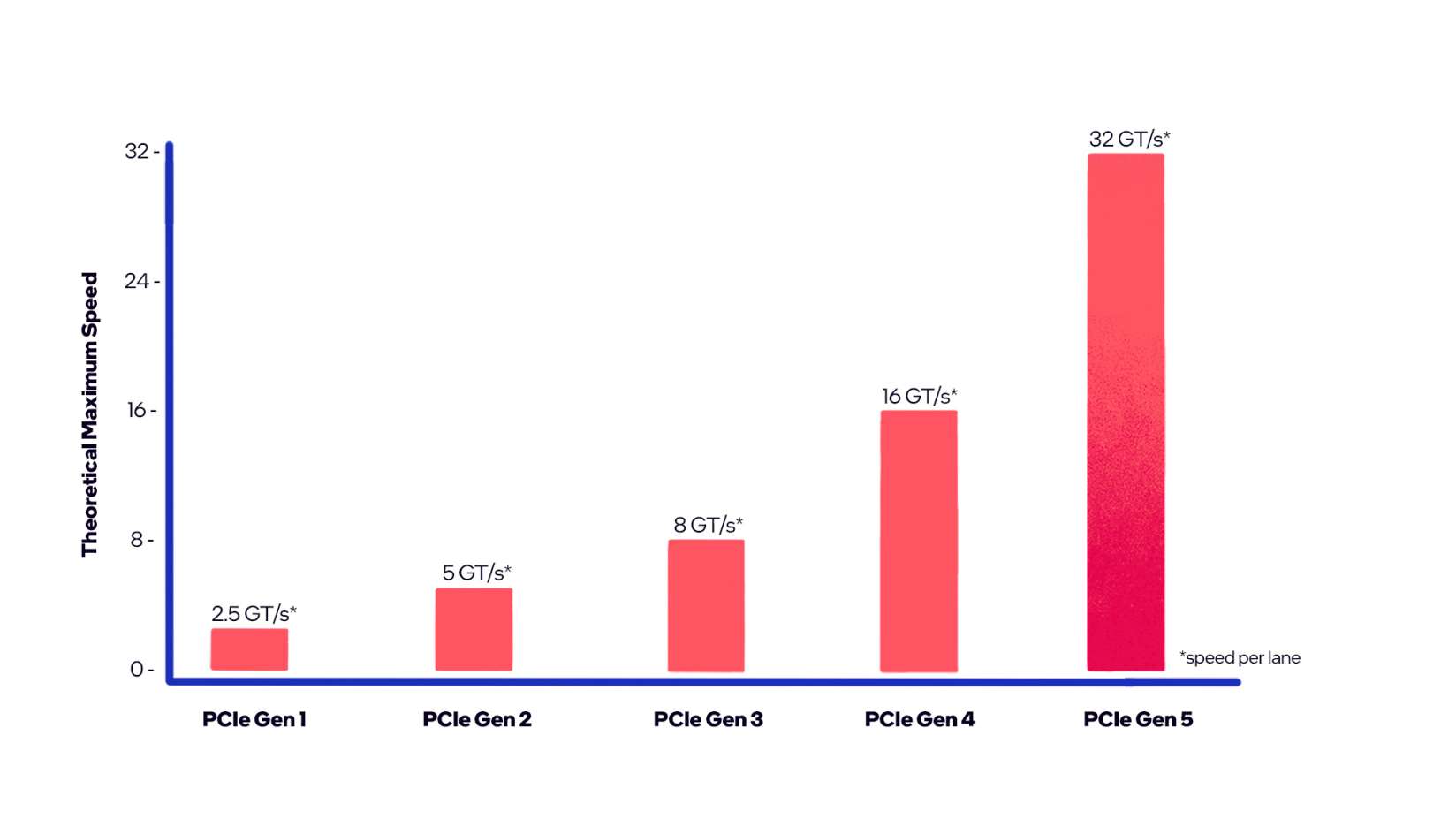The storage revolution is accelerating. As traditional hard drives fade into obsolescence, 1TB SSDs have become the sweet spot for balancing capacity, performance, and value. But with PCIe 5.0 hitting mainstream, QLC/TLC debates raging, and thermal constraints tightening, choosing the right drive demands insight beyond marketing claims. Here’s your definitive 2025 roadmap.
Decoding the Protocol Stack
PCIe 5.0: The New Frontier
Speed: 14,000 MB/s+ sequential reads (2x Gen 4)
Reality Check: Requires active cooling and compatible platforms (Intel 14th Gen+/AMD 8000-series). Drives like Kioxia Exceria Pro G5 (14,700 MB/s) throttle to ~8,000 MB/s without heatsinks.
Value Play: Early adopters pay ~30% premium over Gen 4.
PCIe 4.0: The Performance Sweet Spot
Real-World Advantage: Sustained 7,000 MB/s speeds (e.g., Solidigm P44 Pro), ideal for 8K video workflows.
Cost Efficiency: 1TB drives now at $60–$80 (TLC-based).
SATA III: Legacy Niche
Use Case: Only for pre-2018 systems lacking M.2 slots.
Performance Cap: 550 MB/s bottleneck – 10x slower than Gen 4.
Pro Tip: Gen 5 drives backward-compatible with Gen 4 slots, but never pay for unused speed.

What Benchmarks Don’t Tell You
4K Random IOPS: The Responsiveness Metric
Gaming/OS fluidity requires >1.2M IOPS (e.g., Samsung 990 Pro hits 1.4M).
DRAM-less HMB drives (like TEAMGROUP Z44Q) drop 40% IOPS under sustained loads.
SLC Caching: The Double-Edged Sword
Dynamic Buffering: High-end drives (e.g., WD Black SN850X) maintain 80% speed after cache exhaustion.
QLC Trap: Budget drives (Crucial P3 Plus) plunge to HDD-level 150 MB/s when cache fills.
Write Amplification (WAF):
TLC NAND: WAF ~1.2 (efficient)
QLC NAND: WAF up to 4.0 (accelerates wear)
2025 Cooling Solutions Tested
|
Cooling Type |
Max Temp Drop |
Best For |
Top Picks |
|
Graphene Coating |
8°C |
Slim laptops |
SK Hynix Platinum P41 |
|
Copper Heatsink |
15°C |
Desktops/PS5 |
Corsair MP600 Elite |
|
Vapor Chamber |
22°C |
Workstations |
Seagate FireCuda 540 |
|
No Heatsink |
Throttles |
Avoid for Gen4/5 |
N/A |
Notebook Warning: Single-sided SSDs (e.g., Micron 2550) are non-negotiable for Ultrabooks.
NAND Flash Wars: TLC vs. QLC vs. 3D XPoint
Endurance Decoded
TLC (Triple-Level Cell)
TBW: 600–1,200 (e.g., Kingston KC3000: 800TBW)
Best For: OS drives, creative workloads.
QLC (Quad-Level Cell):
TBW: 200–360 (e.g., Crucial P3 Plus: 220TBW)
Use Case: Game libraries, media archives.
3D XPoint (Optane Hybrid):
Niche: 300µs latency (vs 50µs for NVMe) – fading from consumer market.
|
Scenario |
Key Needs |
Drive Recommendations |
Why It Wins |
|
4K Video Editing |
Sustained 6GB/s+ writes |
Seagate FireCuda 540 (PCIe 5.0) |
12,000 MB/s write, 1,500TBW |
|
Gaming/PS5 |
Heatsink + 7,000MB/s+ |
WD_BLACK SN850P (PS5 Certified) |
Optimized for console I/O patterns |
|
Mini PC Builds |
Single-sided + low power |
Micron 2550 (3.5W TDP) |
42% cooler than competitors |
|
Budget 2TB Upgrade |
$/GB value |
TEAMGROUP MP44Q (QLC) |
$89 for 2TB – ideal for media |
2025 Buyer Traps: Don’t Fall For These!
"Up to" Speed Claims:
Real-world speeds often 30% lower (check TomsHardware sustained write tests).
Warranty Fine Print:
QLC drives prorate warranties after TBW exceeded (e.g., 50% refund at 150% TBW).
PS5 Compatibility:
Requires labeled "PS5 Certified" (tested for console’s bursty I/O).
Fake DRAM Claims:
Verify DRAM cache via TechPowerUp teardowns – some brands misuse "cache" for SLC buffers.
For Desktops: PCIe 5.0 + heatsink (if Gen5-ready) or PCIe 4.0 TLC (else)
For Laptops: Single-sided PCIe 4.0 TLC (e.g., SK Hynix P41)
Endurance: TLC ≥600TBW, QLC only for read-heavy use
Verify: 4K random read >1M IOPS, sustained write >1.5GB/s
Warranty: 5-year + TBW matching usage
The Final Word: In 2025, 1TB SSDs deliver unprecedented value, but context is king. Gamers should prioritize IOPS over peak speeds; creators need sustained writes; mini PC users must chase thermals. With PCIe 4.0 TLC drives like the Solidigm P44 Pro hitting $69, there’s never been a better time to upgrade – intelligently.

Click to confirm
Cancel